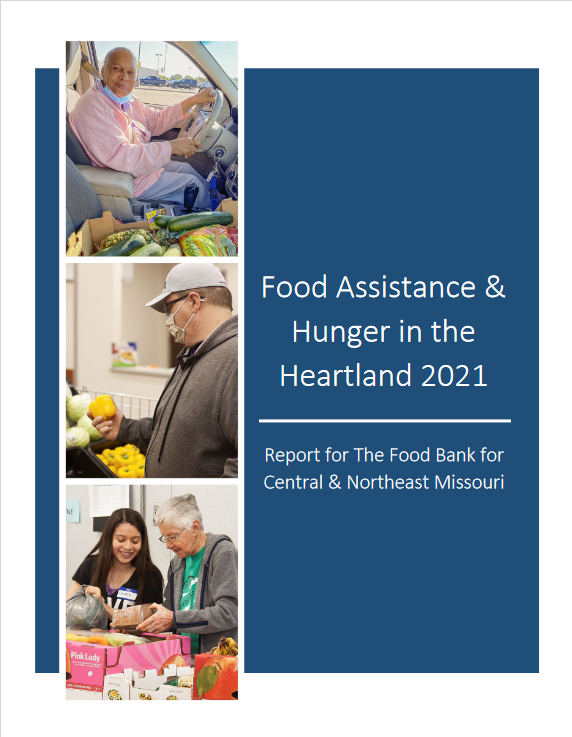“We were grateful to have the opportunity to work with the MU Interdisciplinary Center for Food Security to gather this valuable data. It has provided us a greater understanding of the challenges our neighbors faced in 2021 and will be instrumental as we refine our efforts to better help our service area. ”
New research from the University of Missouri’s Interdisciplinary Center for Food Security indicates Missouri hunger-relief organizations serve a diverse group of neighbors who face tough choices that make food security challenging. The Food Bank for Central & Northeast Missouri and the organization’s pantry partners are important to meeting the meal gap in the region.
Background
Prepared for Feeding Missouri, the MU Food Assistance & Hunger in the Heartland 2021: State Report for Missouri marks the first time all six Missouri food banks partnered to gather quantitative data about the statewide impact of hunger. The report highlights research conducted in the spring and summer of 2021—when COVID-19 was well-established worldwide, but the economic repercussions of COVID were not fully known.
The data below represents data gathered in The Food Bank for Central & Northeast Missouri’s service area. Review key findings, below, or access additional data:
Access key findings or the complete report for The Food Bank for Central & Northeast Missouri
View the complete statewide report on the Feeding Missouri website
Learn more about the study or review regional reports on MU’s Food Assistance & Hunger in the Heartland webpage
Key findings: household composition
36% of all households had a least one adult over the age of 65.
37% had at least one child under 18 years of age.
14% had at least one child under six years of age.
20% of households with children were headed by a single adult.
Key findings: Employment and income
49% of households had at least one working adult.
32% had a member who is working full-time.
48% of all households made $15,000 or less per year.
Key Findings: Veteran status
18% of households included someone who previously served in the U.S. Armed Forces, Reserves, or National Guard
Key Findings: Health
37% of all households had a member with diabetes or pre-diabetes.
59% had a member with high blood pressure.
43% had a member with high cholesterol.
35% had a member without health insurance of any kind.
Key Findings: TRADE-OFFS
37% of households had to choose between paying for food and medicine/medical care in the past 12 months.
42% had to choose between paying for food and utilities.
32% had to choose between paying for food and housing.
30% had to choose between paying for food and transportation.
7% had to choose between paying for food and education expenses.
16% of those with children under 18 had to choose between paying for food and childcare





